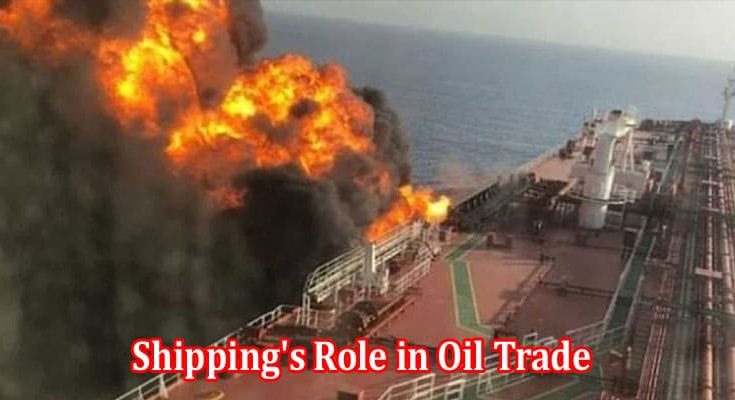The global oil trade is the lifeblood of many economies, powering industries, vehicles, and homes. Without the intricate web of shipping networks, this crucial resource would be unable to reach its destinations. This article offers a comprehensive exploration of the tanker trade and the pivotal role shipping plays in the oil trade. To effectively trade online, you must have a reliable trading platform to use.
Historical Context: Oil Trade and Shipping
Oil, often referred to as “black gold,” has shaped the world’s economic and geopolitical landscape since the late 19th century. The growth of the automobile industry, industrialization in various parts of the world, and the need for energy have driven its demand. As oil consumption increased, so did the need for large vessels to transport it. Enter the supertanker. These vessels, specifically designed for bulk transport of oil, have evolved over the years, with the Very Large Crude Carriers (VLCC) and Ultra Large Crude Carriers (ULCC) being the giants of the seas today. Historical events, such as the 1973 OPEC oil embargo, underscored the vital role of these tankers in global trade, as they became tools of geopolitical leverage.
The Anatomy of an Oil Tanker
Tankers are more than just giant floating containers. They are marvels of engineering, designed for both efficiency and safety. The type of tanker—whether Aframax, Suezmax, or the colossal VLCCs—determines its capacity and the routes it can navigate. For instance, VLCCs, due to their size, often require deepwater ports.
Inside, these vessels are equipped with a series of storage tanks, often holding different oil grades. Modern tankers are equipped with advanced navigation systems, ballast systems for stability, and safety measures to prevent oil spills, including double hulls and emergency response protocols.
The Economics of Tanker Trade
Owning and operating a tanker is a capital-intensive venture. A VLCC can cost upwards of $100 million. Once in operation, daily running costs, including crew wages, maintenance, and fuel, can be significant. The profitability of tanker operations hinges on various factors. Charter rates, essentially the rent a charterer pays to lease a vessel, fluctuate based on oil demand, geopolitical events, and even weather conditions.
Moreover, oil prices play a critical role. High oil prices might mean higher revenues for tanker operators, but they also mean higher fuel costs. Geopolitical tensions, such as those in the Strait of Hormuz, a crucial chokepoint, can lead to spikes in charter rates due to increased risks.
Navigating the Geopolitical Waters
Oil shipping is as much about geopolitics as it is about logistics. Certain maritime chokepoints, like the Straits of Hormuz or Malacca, see a significant portion of global oil trade. A blockade or political tension in these regions can disrupt global oil supplies, causing price surges.
Sanctions, tariffs, and trade agreements further complicate the landscape. For instance, when a country faces international sanctions, its oil exports can be affected, leading to shifts in tanker routes and demand.
Environmental Considerations and Challenges
The environmental implications of oil shipping are profound. Accidents, like the Exxon Valdez spill, have led to catastrophic environmental damage. As a result, the industry has seen tighter regulations, pushing for double-hulled designs and rigorous crew training.
Emissions from tankers also contribute to global greenhouse gas emissions. As climate change becomes an ever-pressing concern, the shipping industry faces pressure to adopt greener technologies. Innovations like LNG-powered ships and advancements in hull design to improve fuel efficiency are steps in this direction.
The Future of Oil Shipping
The rise of renewable energy sources and electric vehicles has initiated discussions about the decline in oil demand in the future. How will this impact the tanker trade? While it’s unlikely oil will be completely replaced in the near future, the industry might see a shift in trade routes, especially with the potential of the Arctic route opening due to melting ice.
Moreover, technological advancements promise a new era for shipping. Concepts like autonomous ships, integrated with AI and advanced sensors, could redefine tanker operations, making them safer and more efficient.
Conclusion
Oil shipping, intricately woven with engineering, economics, and geopolitics, anchors the global energy scenario. As it grapples with environmental and geopolitical challenges, its pivotal role in fortifying nations’ energy security remains steadfast.

Caroline is a dedicated writer with a passion for keeping readers informed. Specializing in providing the latest news updates and unbiased reviews, she strives to deliver accurate and insightful content. With a keen eye for detail and a commitment to journalistic integrity, Caroline ensures that her readers are always well-informed. Stay tuned for her latest articles to stay up-to-date on current events and trends.



